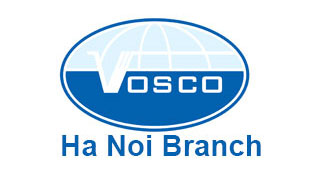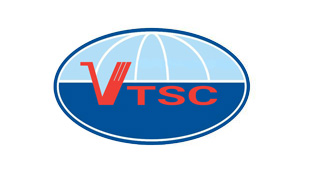 Oil demand strong, supplies tighten
Oil demand strong, supplies tighten
Oil demand strong, supplies tighten
High prices and supply disruptions are confounding both crude oil and tanker markets.
As supply disruptions continue to play havoc with both oil and tanker markets, Saudi Arabia – whose ability to increase crude production is unmatched – holds the key to stabilising markets.
The Kingdom increased its crude production to 9.1M/bpd in response to Middle East political turmoil in February, according to Saudi oil minister Ali al-Naimi, but has since throttled back production. Despite the Libyan crisis and the shut-in of its supply of light sweet crude, Saudi Arabia – and other OPEC members – appear convinced the world has sufficient supplies. Others dispute this analysis.
The Centre of Global Energy Studies (CGES) says that oil prices are rising to levels that are beginning to affect demand – yet the world is being told once again that markets remain ‘well-supplied’ with crude and that the upward march of prices does “not reflect the realities of supply and demand”. What worries the CGES is that oil prices are tracking $10-15/barrel higher than those of early 2008 (see graph, left).
Any notion that oil prices over $100/barrel would encourage OPEC members to formally raise supply quotas has evaporated.
IHS Global Insight says OPEC believes the markets are in a comfortable position, verging on potential oversupply, and the organisation’s “latest comments go back to the old themes of speculation and consumer taxes for the high prices at the consumer end, with talk too of a ‘patchy economic recovery’ capping demand growth”.
CGES analysts say: “the Kingdom appears unwilling to act decisively to rebalance the market for fear of triggering a price collapse and upsetting some other OPEC member-countries, who cannot benefit from higher production and lower prices”.
Instead, they continue “to insist that there is no demand for additional oil and that the price rises are once again due to ‘speculation’” – a view that many (including those with a vested interest in maintaining high prices) accept.
OPEC expects oil demand to increase by 1.39M/bpd in 2011, which nearly matches the International Energy Agency (IEA) projections of a 1.4M/bpd rise over the year. The difference comes from lower starting level assumptions with OPEC’s 2010 year-end estimate for consumption at 86.5M/bpd and the IEA’s higher estimate at 87.9M/bpd (see graph, above right). Both organisations forecast a dip in demand in 2Q11 followed by a sharper recovery continuing into 3Q11.
Uncertainties prevail
Several key uncertainties are driving the oil markets. The loss of Libyan crude has not been completely made up by other producers, particularly those in OPEC, says Global Insight.
There also remains a critical crude shortfall in Europe of about 1M bpd. The CGES estimates that crude arrivals in Europe have dropped by 750,000bpd in the last two months.
While West African crude can make up some of the shortfall, the problem for European refineries is one of quality and cost. Libyan crudes are less than 0.5% sulphur and many smaller, less sophisticated European refineries rely on this base stock to produce high yields of low-sulphur distillates without sophisticated desulphurisation processes.
Higher prices for lighter crudes have hit refining margins in Europe which has led to lower output and a shift to refiners in Asia and elsewhere, which can handle heavier crude stocks.
Refinery maintenance in northwest Europe has also hit supply levels, but a number of smaller refiners have cut runs or closed due to the uneconomic alternatives.
Despite the reluctance of Saudi Arabia to step up production, several analysts suggest tanker tonne-miles will have to rise.
The loss of Libyan production, which involved 11-17 day return voyages to Italy, France and other nearby European destinations, will be supplemented initially by West African crude (also low sulphur).
However, as Jefferies analyst Douglas Mavrinac points out, because West Africa does not have spare capacity, either China or more probably the US is not receiving normal volumes from that area.
“Consequently, we would expect an incremental boost to tanker tonne-mile demand once Saudi Arabia does begin to increase production levels to fully offset the decreased Libyan exports,” Mavrinac said.
From the Gulf to the US, the demand will fall mainly on the larger ships – Suezmaxes and VLCCs rather than Aframaxes.
The fuel-supply tightness in Europe has been compounded, according to the CGES, “by a fall in gasoil imports from Asia, which were diverted to meet local shortfalls in demand following cuts to Japanese product exports. Before the earthquake, Japan was exporting 200,000bpd of diesel, mainly to neighbouring Asian countries and the the Pacific coast of South America.”
Data from the Petroleum Association of Japan (PAJ) show that crude runs in that country have fallen by around 750,000bpd from January-February levels, but are improving as capacity returns. Serious damage was sustained by three refineries which, according to oil industry reports, account for 600,000bpd of the lost refining capacity (13% of Japan’s total capacity).
While there are questions about Saudi Arabia’s ability to supply the lighter sweeter element of crude oil demand, Global Insight says Libyan crude supplies will have to be compensated for – and the swiftness with which the worldwide shortfall can be restored depends almost entirely on Saudi Arabia.
Tanker market rates and growth prospects
Jefferies equity analyst Doug Mavrinac stands by his prediction for a crude tanker rebound soon. “We continue to believe the tanker market is positioned for an improved earnings environment, [likely to begin] in 2H11,” he said.
“Based on our assumption that global oil demand will increase 2% in 2011 and that the orderbook will experience slippage of 35%, we expect rates to begin to improve, with an increase in OPEC production levels mid-year acting as the demand catalyst.”
Slippage in the tanker orderbook is not as great as first thought and is limiting fleet growth, says Mavrinac. “Despite concerns to the contrary, tanker fleet growth remains muted with tanker YTD fleet growth of only 5.1M dwt or 1.1%, translating to annualised fleet growth of 20.4M dwt or 4.4%.”
This falls under earlier orderbook projections of 13.9% of the fleet (excluding scrapping) “due to continued slippage of 30-40%.”
Mavrinac says the factors behind the increased slippage rate should continue, “in fact, we expect tanker fleet growth of 6-7% in 2011 (compared with the headline orderbook estimate of 13-14%) and for tanker fleet growth to slow to 3-4% in 2012 (compared with the headline orderbook estimate of 8-9%).”
Mavrinac has refined his rate outlook after 1Q11 due to events in Libya and Japan.
He has raised his 1Q11 VLCC rate assumptions from $20,000/day to $22,000/day and cut his Aframax estimate from $15,000/day to $12,500/day. But he believes VLCC rates will hit $53,000/day in 3Q11 and $65,000/day in 4Q11.
He also believes Aframax rates will recover to $25,000/day in 3Q11 and $30,000/day in 4Q11.
(According to Fairplay)






















